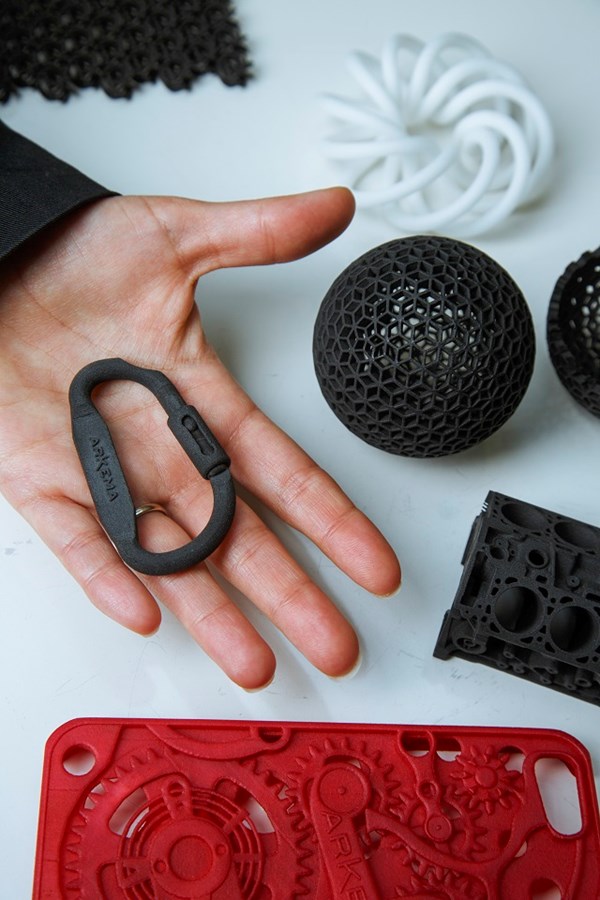One of the First Biobased Nylons Turns 70
Despite its advancing age, an ÔÇťexciting futureÔÇŁ is forecast for ArkemaÔÇÖs Rilsan Nylon 11.

We have been reporting on new bioplastics for the last several years and more recently, I have blogged about new developments unveiled at the SPC Bioplastics Converge conference. We have also reported on the ‘greening’ of engineering thermoplastics—a cover story that appeared in our May 2015 issue.
In that article, I noted that most of the commercial activity has been focused on nylons and polyesters, though some are directed towards higher-end TPEs and TPUs. The nylons appear to have the longest run, though, and I thought it worthwhile to highlight the 70th anniversary of the invention of Arkema’s flagship Rilsan nylon 11 series of high-performance polymers, whose feedstock source is derived 100% from the oil castor bean (pictured at top)—making it among the earliest members of the biobased nylon family of polymers.
And, despite its advancing age, the company sees nothing more than “an exciting future” for these polymers. “Today Rilsan PA11 is known across the globe for being one of the world’s highest performing specialty polymers—the brand has become synonymous with differentiated performance as well as being 100 percent biobased,” says Kevin Hanrahan, chief marketing officer for Arkema’s Technical Polymers. “But the brand came from humble and challenging origins.”
Arkema shared the history of Rilsan nylon 11 in 7 key dates:
ÔŚĆ June 1947—First patent, commercialized by a small French firm called Organico.
ÔŚĆ 1949—Nylon 11 makes its market debut under the brand name Rilsan; Serquigny plant is built.
ÔŚĆ 1950’s—The automaker Citroen is one of the first to grasp the potential of the new plastic, using it to make the fuel lines of the legendary DS.
ÔŚĆ 1970—Production begins in the U.S. (Birdsboro, Penn.)
ÔŚĆ 1980’s and 1990’s—Rilsan nylon11 becomes the reference for many automotive oil & gas applications.
ÔŚĆ 2000’s—3D printing, advanced composites, lightweight sports equipment, and metal replacement are common development themes
ÔŚĆ 2013—Production begins in China (Zhangjiagang).
The first commercial batch was made in 1947 in a repurposed spinning mill called ‘La Dame Blanche’ in Serquigny, France. (Gosh, that name is reminiscent of Brando yelling ‘STELLA’ in Tennesse Williams’ Streetcar Named Desire). According to Arkema, these historic first steps were taken during very difficult times.
The desperate conditions of post-World War II forced the original inventors to work under extremely adverse conditions. Each harrowing step of the Rilsan pioneers is richly documented in Arkema’s digital museum.
Arkema also recorded the evolution of the material’s original applications via a series of advertisements and promotions. From humble beginnings in textiles, fibers, brushes and pipes, the polymer quickly gained recognition in specialized applications driven by its early unique set of extreme performance properties.
Rilsan nylon 11’s birthday celebration was officially kicked off at Arkema’s Serquigny production facility and research center on June 10th. Erwoan Pezron, global president for Arkema’s Technical Polymers, reflected not only on the rich legacy of the Rilsan polymer family, but on its exciting future.
“The rapidly evolving world in which we live presents more and more opportunities for continued growth…Rilsan polymers are now produced in all three major regions—Europe, North America, and Asia. And we are ready to meet many of tomorrow’s challenges today—such as lightweight metal replacement for the automotive industry, additive manufacturing (3D printing), and sports equipment that helps athletes break records. The first 70 years have prepared us well.”

Related Content
Processing Takes a Dip in June
Plastics activity took a relatively big downturn in June, ending at a low for the year and lower than the same month a year ago.
Read MorePlastics Processing Activity Contraction Continues in August
Four months of consecutive contraction overall.
Read MorePlastics Processing Index Rebounds with 48.5 Reading in May
Plastics processors recover some ground after sharp April drop, but not enough to avoid contraction.
Read MorePlastics Processing Activity Lands Flat at 50 in March
Latest reading is a slight regression from February’s expansion but not enough to call it contraction.
Read MoreRead Next
For PLASTICS' CEO Seaholm, NPE to Shine Light on Sustainability Successes
With advocacy, communication and sustainability as three main pillars, Seaholm leads a trade association to NPE that ‘is more active today than we have ever been.’
Read MoreSee Recyclers Close the Loop on Trade Show Production Scrap at NPE2024
A collaboration between show organizer PLASTICS, recycler CPR and size reduction experts WEIMA and Conair recovered and recycled all production scrap at NPE2024.
Read More











